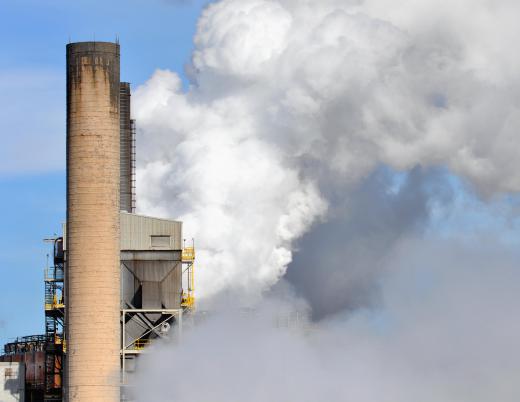An emissions cap is a government standard which dictates the maximum amount of a particular pollutant which can be produced. The goal of instituting emissions caps is usually to reduce overall emissions levels by setting a standard which forces industries to reduce their output of various pollutants. Emissions caps are usually discussed within the context of a cap and trade system, a technique which can be used to control and regulate emissions.
When an emissions cap is established, government workers determine how much of a particular pollutant is currently being generated, and how much harm that pollutant is doing to the environment. Then, they set a target to reach, and determine how quickly the production of that pollutant can be lowered, taking technological limitations, cost, and other factors into account. If an emissions cap is too radical, it will be impossible to meet, and the system can fall apart. On the other hand, if it is too lenient, there will be no incentive to reduce emissions, and the goal of lowering pollutants will not be realized.

Under a cap and trade system, industries which generate pollutants are given credits which allow them to produce a set amount of a given pollutant. The amount of the credits distributed adds up to the total allowance under the emissions cap. If a company produces less emissions than allowed under its credits, it can sell or trade the excess credits with a company which is producing more pollutants than it has been permitted under the system. By trading credits, companies can help an industry as a whole reach an emissions goal.
Setting an emissions cap is supposed to create an incentive to lower pollution by making it profitable to wind up with extra credits which can be sold or traded on the open market. However, the cap system has a serious flaw, which is that emissions need to be monitored. Monitoring systems can be expensive to put in place and maintain, and this can make it challenging to implement and enforce an emissions cap in the real world. This concern has been raised as a criticism of cap and trade proposals by people who feel that such systems will eventually fail.
The clear advantage of an emissions cap is that it sets a clear goal for emissions reduction, while also providing flexibility which will allow companies to adjust to tightening emissions standards. The system also encourages innovation and competition.
Ever since she began contributing to the site several years ago, Mary has embraced the exciting challenge of being a About Mechanics researcher and writer. Mary has a liberal arts degree from Goddard College and spends her free time reading, cooking, and exploring the great outdoors.

